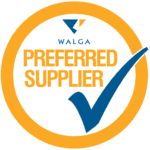At Corsign we care deeply about the health and well being of our roadworkers and ensuring that their working environment is as safe as it can be. Our dedication to safety signage drives us to maintain the highest possible standards which are why we have put together a helpful guide to keeping roadworks both safe and compliant.
Naturally, as a safety signage company, we believe road traffic signage, as well as safety signage, are key components in order to keep roadworks accident free. However, they are not the only tools that site managers have at their disposal to maximize workplace health and safety.
Please see below our guide to maintaining a safe and compliant roadworks site.
SAFETY MEASURES
There are a number of measures that can be taken to ensure the safety of workers and the public during roadwork:
- Use barriers and cones to clearly mark the area where work is taking place and to redirect traffic as necessary.
- Use warning signs to alert drivers to the presence of workers and any potential hazards in the area.
- Use personal protective equipment (PPE) such as hard hats, high-visibility clothing, and safety glasses to protect workers from potential hazards.
- Use traffic control measures & products to regulate the flow of traffic and ensure the safety of workers and drivers.
- Use appropriate lighting and reflectors to increase visibility in low-light conditions.
- Educate workers on correct safety procedures and ensure that they are following all safety protocols while on the job.
- Regularly inspect equipment and vehicles to ensure that they are in good working order and do not pose any safety risks.
- Implement an emergency response plan in case of accidents or other unforeseen events.
THE WA ROAD TRAFFIC CODE 2000
In Western Australia, the main legislation governing the use of signage in roadwork is the Road Traffic Code 2000. This code sets out the requirements for the use of traffic control devices, including signs, in roadwork.
Some of the types of signs that may be used in roadwork in Western Australia include:
- Warning signs: These signs are used to alert drivers to potential hazards or changes in the road ahead. Examples include construction ahead signs, narrow road signs, and detour signs.
- Regulatory signs: These signs are used to inform drivers of rules or requirements that must be followed. Examples include stop signs, giveaway signs, and speed limit signs.
- Information signs: These signs are used to provide drivers with information about the road or surrounding area. Examples include destination signs, mileage signs, and tourist information signs.
- Temporary traffic control signs: These signs are used to direct traffic and control the flow of vehicles during roadwork. Examples include detour signs, lane closure signs, and merge signs.
It is important to use the appropriate signage in roadwork to ensure the safety of workers and the public, and to ensure compliance with the Road Traffic Code 2000.
Corsign has the capability to deliver all products needed to comply with the WA traffic code – including:
WARNING SIGNS
In Western Australia, some of the warning signs that may be used to alert drivers to hazards around roadworks include:
- “Construction Ahead” signs: These signs are used to warn drivers that there is construction work taking place ahead and that they should be prepared for potential delays or changes in road conditions.
- “Narrow Road” signs: These signs are used to warn drivers that the road ahead is narrow and that they should be prepared to give way to oncoming traffic if necessary.
- “Detour” signs: These signs are used to direct drivers to a different route around the roadwork.
- “Loose Gravel” signs: These signs are used to warn drivers that the road surface may be uneven or slippery due to loose gravel, and that they should reduce their speed and drive carefully.
- “Symbolic Workman” signs: These signs are used to alert drivers to the presence of workers in the roadwork area and to caution them to slow down and be prepared to stop if necessary.
REGULATORY SIGNS
In Western Australia, some of the regulatory signs that may be used to notify drivers approaching roadworks include:
- “Stop” signs: These signs are used when drivers are required to come to a complete stop before proceeding. They may be used at intersections or other locations where there is a potential for conflict with other vehicles or pedestrians.
- “Give Way” signs: These signs are used to indicate that drivers must yield the right of way to oncoming traffic or pedestrians.
- “Speed Limit” signs: These signs are used to indicate the maximum speed at which drivers are permitted to travel in a particular area. The speed limit may be reduced in roadwork areas to ensure the safety of workers and the public.
- “No Entry” signs: These signs are used to prohibit drivers from entering a particular area or roadway.
- “One Way” signs: These signs are used to indicate that traffic is allowed to travel in only one direction on a particular roadway.
INFORMATION SIGNS
In Western Australia, some of the information signs that may be used to inform drivers approaching roadworks include:
- “Destination” signs: These signs are used to indicate the distance and direction to a particular location or landmark.
- “Mileage” signs: These signs are used to indicate the distance to a particular location or landmark in miles.
- “Tourist Information” signs: These signs are used to provide drivers with information about local attractions or points of interest.
- “Advance Warning” signs: These signs are used to alert drivers to a change in the road ahead, such as a sharp curve or a change in the number of lanes.
TEMPORARY TRAFFIC CONTROL SIGNS
In Western Australia, temporary traffic control signs are used to direct traffic and control the flow of vehicles during roadwork or other temporary events. These signs may be used in conjunction with other traffic control measures, to ensure the safety of workers and the public.
Some examples of temporary traffic control signs that may be used in Western Australia include:
- “Detour” signs: These signs are used to direct drivers to a different route around the roadwork or other event.
- “Lane Closure” signs: These signs are used to inform drivers that one or more lanes are closed ahead due to roadwork or other activities.
- “Merge” signs: These signs are used to indicate that two lanes of traffic will be merging into one lane ahead.
- “Reduced Speed Ahead” signs: These signs are used to indicate that the speed limit will be reduced ahead due to roadwork or other activities.
- “Stop/Slow” signs: These signs are used as a traffic control measure within or around a worksite. The “Stop” side is used to direct traffic to stop, while the “Slow” side is used to direct traffic to proceed with caution.
It is important for drivers to follow the instructions provided on temporary traffic control signs and to exercise caution when driving through roadwork areas.
Road safety signage plays a vital role in helping to keep roads safe by providing drivers with important information and guidance. By clearly marking the road and its surroundings, road signs help drivers to navigate the roadway, make informed decisions, and anticipate potential hazards.
SAFETY SIGNAGE IS EFFECTIVE
Studies have shown that well-designed and properly placed road signs can significantly reduce the incidence of accidents and fatalities on the road. For example, the use of speed limit signs can help to reduce the number and severity of crashes, and the use of warning signs can help to alert drivers to potential hazards and reduce the likelihood of accidents.
In addition, the use of traffic control devices such as traffic lights and roundabouts can help to regulate the flow of traffic and reduce the risk of collisions.
Overall, it is clear that road traffic signage plays a crucial role in helping to keep roads safe and save lives.
Road signs are extremely important to the safety of roadworks in Western Australia. By using the appropriate road signs, workers can alert drivers to the presence of roadwork and help to reduce the risk of accidents and injuries. Road signs also help to ensure that the flow of traffic is regulated and that drivers are aware of any changes in the roadway.
At Corsign we are only too happy to talk to you about your road safety signage needs and will endeavour to deliver excellent outcomes and cost effective solutions. Contact us today to discuss your product and service needs.




